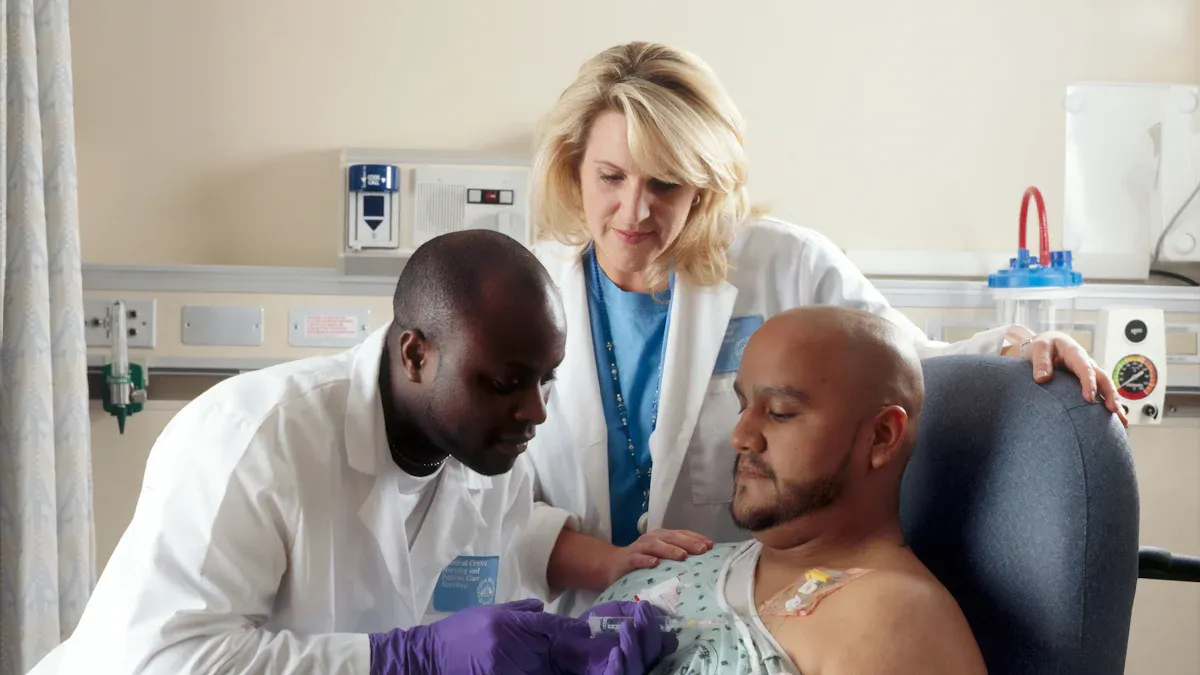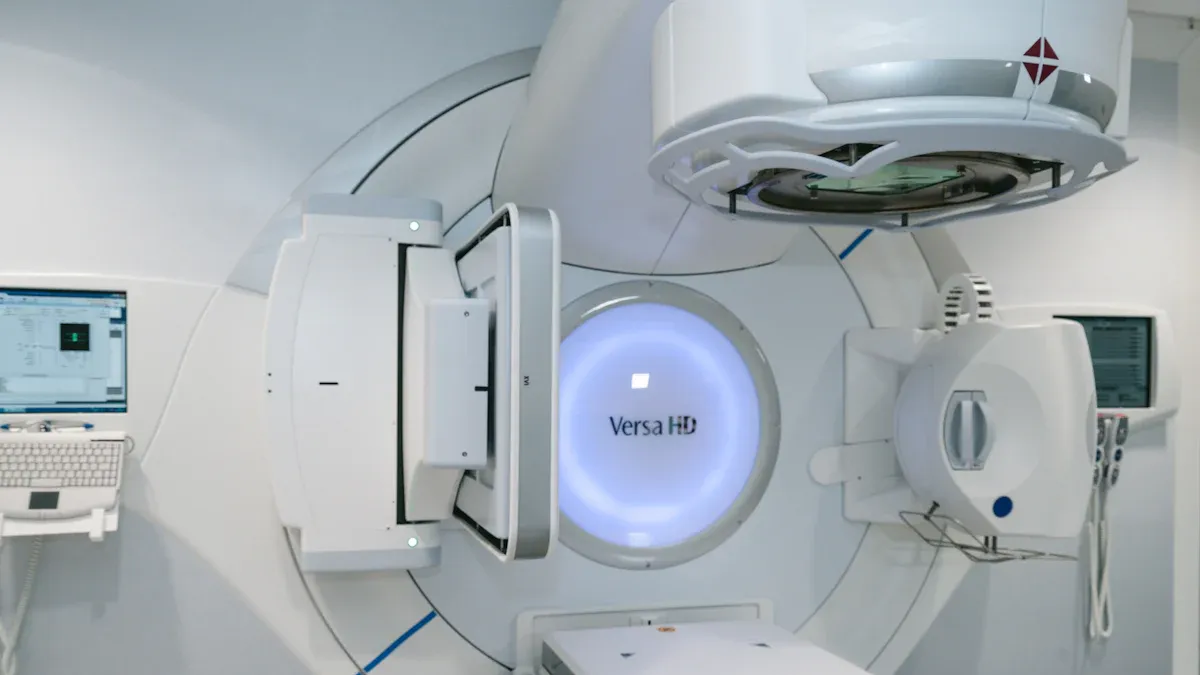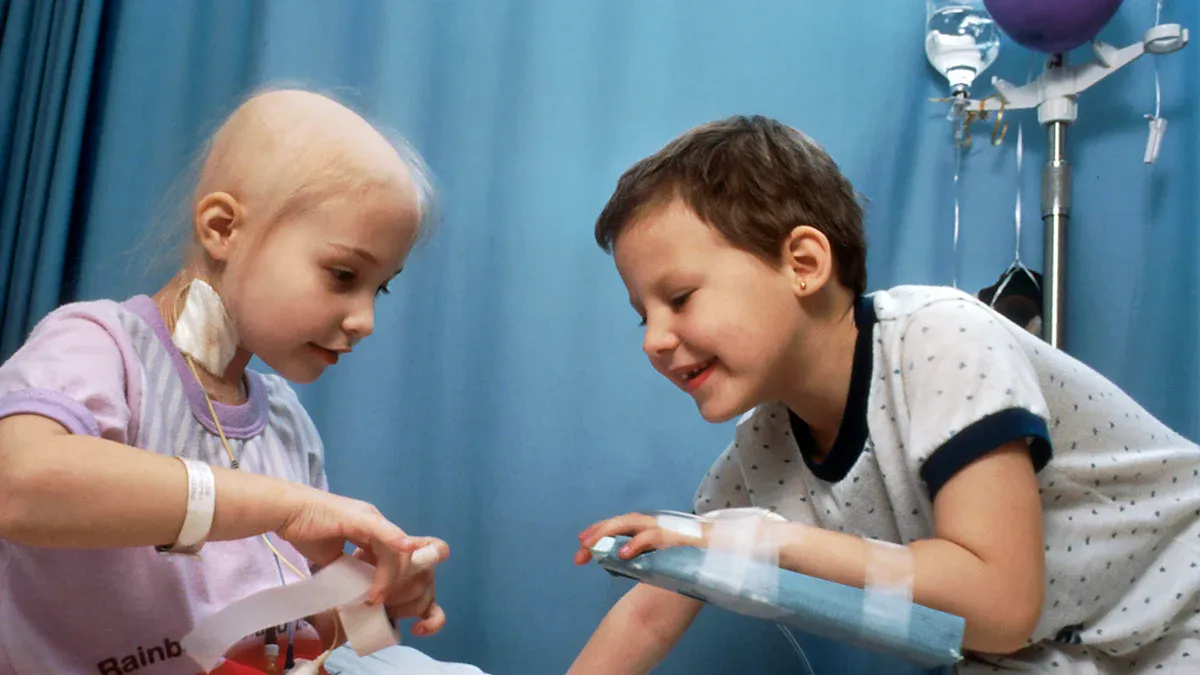Tracing the Evolution of Cancer Treatments Through History

Understanding the history of cancer treatments helps you appreciate how far medical science has come. Early approaches often relied on trial and error, but modern advancements have transformed patient care. For example, the overall cancer survival rate has risen from 49% in the 1970s to 68% today. This progress reflects breakthroughs in treatment and prevention. The American Cancer Society estimates that 3.8 million cancer deaths have been prevented over the last 30 years. These achievements show how innovation continues to improve lives and offer hope for the future. So, is cancer a modern disease? The history of cancer through the ages reveals humanity's enduring fight against it.
Key Takeaways
Cancer has been around for thousands of years. Old writings show early treatments and ideas about it.
New methods like chemotherapy and immunotherapy have helped more people survive cancer and get better care.
Precision medicine matches treatments to a person’s genes. This makes treatments work better and causes fewer problems.
New tools like AI and gene editing could make cancer treatments even better in the future.
Solving problems like drug resistance and making treatments available to everyone is very important for helping all cancer patients.
Is Cancer a Modern Disease? The History of Cancer Through the Ages
Ancient Times: Early Theories and Remedies
Ancient Egyptian medical texts and the distinction between benign and malignant tumors
You might think cancer is a modern disease, but its history stretches back thousands of years. Ancient Egyptian medical texts, like the Edwin Smith Papyrus from around 3000 BCE, describe cases of breast tumors. These texts distinguish between tumors that are benign and those that are malignant. Egyptian physicians treated some tumors with cauterization, a method that involved burning the affected tissue. Evidence from mummies also shows signs of bone tumors and metastatic lesions, proving that cancer existed in ancient times.
Year | Civilization | Evidence |
|---|---|---|
3000 BCE | Egypt | Evidence of cancerous cells found in mummies. |
1600 BCE | Egypt | Ancient scrolls describe cases of breast tumors treated by cauterization. |
400 BCE | Greece | Hippocrates recognized differences between benign and malignant tumors. |
Hippocrates' theories and the Greek origin of the term 'cancer'
The term "cancer" comes from the Greek word "karkinos," meaning crab. Hippocrates, often called the "Father of Medicine," used this term around 400 BCE to describe tumors. He believed cancer resulted from an imbalance of bodily fluids, particularly an excess of black bile. This theory, known as humoral theory, shaped medical understanding for centuries. While his ideas were incorrect, they marked an early attempt to explain cancer scientifically.
Early treatments: herbal remedies, spiritual practices, and surgical methods like cauterization
In ancient times, treatments for cancer were limited. Physicians used herbal remedies, spiritual practices, and surgical methods. For example, Indian texts like the Ramayana mention using arsenic paste to treat tumors. In China, the Nei Ching described breast cancer and its treatments. Surgical methods like cauterization were common, but they often caused severe pain and infection. Despite these challenges, these early efforts laid the groundwork for future advancements.

The Middle Ages and Renaissance: Advancements in Understanding
The influence of humoral theory and religious beliefs on cancer treatment
During the Middle Ages, humoral theory continued to dominate medical thinking. You would have seen treatments focused on balancing the body's fluids through methods like bloodletting and purging. Religious beliefs also played a significant role. Many people viewed cancer as a punishment for sins, leading to treatments that combined prayer with rudimentary medical practices.
The rise of anatomical studies and surgical techniques during the Renaissance
The Renaissance brought a renewed interest in human anatomy. Physicians like Andreas Vesalius and Antonio Benivieni conducted detailed anatomical studies, transforming the understanding of the human body. These studies improved surgical techniques, making tumor removal more precise. By the 1500s, autopsies became common, revealing the internal structure of cancers and advancing medical knowledge.
Early attempts at tumor removal and their limitations
Surgeons in the Renaissance began attempting tumor removal. Claude Gendron, a French physician, argued that cancer arose locally as a hard mass and needed surgical removal. However, these procedures faced significant challenges. Without anesthesia or antiseptics, surgeries were painful and often led to infections. Despite these limitations, these early efforts marked a shift toward a more clinical approach to cancer treatment.
The 19th and 20th Centuries: The Birth of Modern Oncology

Key Scientific Discoveries
The discovery of X-rays and their revolutionary use in cancer treatment
The discovery of X-rays in 1895 by Wilhelm Roentgen transformed cancer treatment. You might not realize it, but this breakthrough allowed doctors to visualize tumors inside the body for the first time. By the early 20th century, X-rays became a tool for both diagnosis and therapy. Radiation therapy emerged as a way to target and destroy cancer cells, offering hope to patients with previously untreatable conditions. This innovation marked the beginning of modern oncology.
The development of chemotherapy, including the first chemotherapeutic drugs in the 1940s
Chemotherapy began during World War II when researchers noticed that mustard gas could kill rapidly dividing cells. This discovery led to the development of drugs like nitrogen mustard, which targeted cancer growth. By the 1940s, chemotherapy became a cornerstone of cancer treatment. You can trace its roots to this era, where scientists began exploring how chemicals could selectively attack cancer cells while sparing healthy tissue.
The role of methotrexate in treating rare tumors and the beginning of the chemotherapy era
Methotrexate, introduced in the 1950s, revolutionized cancer care. It was one of the first drugs to successfully treat rare tumors, such as choriocarcinoma. This milestone marked the start of the chemotherapy era, where targeted chemical treatments became a standard approach. Methotrexate’s success paved the way for the development of other chemotherapeutic agents, expanding treatment options for patients worldwide.
Did you know? The identification of oncogenes and tumor suppressor genes in the 1970s laid the foundation for understanding cancer biology. These discoveries helped scientists design therapies that target specific genetic mutations.
Hormonal and Targeted Therapies
The discovery of hormonal treatments for specific cancers
Hormonal therapy emerged as a game-changer in the 20th century. In 1941, Charles Huggins discovered that manipulating testosterone levels could control prostate cancer growth. This finding earned him a Nobel Prize and opened the door to hormonal treatments for other cancers, such as breast cancer. You can see how this approach shifted the focus from broad treatments to more precise interventions.
The emergence of targeted therapies in the late 20th century
Targeted therapies gained traction in the 1970s, offering a new level of precision in cancer care. Drugs like tamoxifen, which blocks estrogen receptors in breast cancer cells, became widely used. By the late 20th century, targeted treatments like imatinib revolutionized care for patients with specific genetic mutations. These therapies minimized side effects and improved outcomes, showing how far cancer treatment had come since its early days.
Tip: Advances in DNA research, such as Watson and Crick’s discovery of its structure in 1962, played a crucial role in developing targeted therapies. Understanding cancer genetics allowed scientists to design drugs that attack cancer cells at their source.
The Modern Era: Precision Medicine and Immunotherapy

Precision Medicine
The use of genomic data to tailor treatments to individual patients
Precision medicine has transformed cancer care by focusing on your unique genetic makeup. Scientists now use genomic data to identify mutations driving cancer growth. This approach allows doctors to design treatments that target specific genetic changes in your tumor. For example, if your cancer involves a mutation in the HER2 gene, targeted drugs like trastuzumab can block its activity. By tailoring therapies to your individual needs, precision medicine improves outcomes and reduces side effects.
Advances in molecular diagnostics and personalized care
Molecular diagnostics play a key role in precision medicine. These tools analyze your DNA to detect cancer-related mutations. Techniques like next-generation sequencing (NGS) provide detailed insights into your tumor’s genetic profile. With this information, doctors can recommend personalized care plans. You benefit from treatments that are more effective and less invasive. Advances in molecular diagnostics have made it possible to predict how your cancer might respond to specific therapies, giving you a better chance at recovery.
Immunotherapy
How immunotherapy harnesses the immune system to fight cancer
Immunotherapy has revolutionized cancer treatment by activating your immune system to attack cancer cells. Normally, cancer evades immune detection, but immunotherapy changes that. Treatments like checkpoint inhibitors block proteins that prevent your immune cells from recognizing cancer. This allows your body to fight the disease naturally. Immunotherapy offers hope for patients with advanced cancers, where traditional treatments may not work.
Breakthroughs like checkpoint inhibitors and CAR-T cell therapy
Checkpoint inhibitors, such as pembrolizumab, have shown remarkable success in treating cancers like melanoma and lung cancer. Another breakthrough, CAR-T cell therapy, involves modifying your immune cells to target cancer directly. Scientists engineer your T cells to recognize and destroy cancer cells. This therapy has proven effective for blood cancers like leukemia. These innovations highlight the power of immunotherapy in transforming cancer care.
Note: Precision medicine and immunotherapy represent the cutting edge of cancer treatment. They offer new possibilities for patients who previously had limited options.
The Future: Challenges and Breakthroughs
Current Challenges in Cancer Treatment
Addressing drug resistance and treatment accessibility
Drug resistance remains one of the biggest hurdles in cancer treatment. You may not realize it, but drug resistance accounts for nearly 90% of cancer-related deaths. When cancer cells adapt to evade therapies, treatments become less effective, leaving patients with fewer options. This challenge highlights the need for innovative approaches to anticipate and counteract resistance before it occurs.
Accessibility to treatment is another pressing issue. Many advanced therapies, such as CAR-T cell therapy, come with high costs. For instance, the total expense for this treatment can reach up to $500,000, making it unattainable for many patients. Collaborative efforts across healthcare systems are essential to make these life-saving treatments more affordable and widely available.
Evidence Type | Description |
|---|---|
Drug Resistance | Only ~40% of cancer patients in the US were eligible for immune checkpoint inhibitors in 2018, with a response rate of only 12.46%. |
Treatment Costs | The total treatment expense for chimeric antigen receptor T-cell therapy can reach up to $500,000 for severe cytokine release syndrome. |
The need for more effective treatments for rare cancers
Rare cancers often lack effective treatments due to limited research and funding. You might find it surprising that these cancers collectively account for about 25% of all cancer diagnoses. However, their rarity makes it challenging to conduct large-scale clinical trials. Addressing this gap requires a diverse range of expertise and interdisciplinary collaborations to develop therapies that target these unique conditions.
Promising Research and Innovations
The potential of AI and machine learning in oncology
Artificial intelligence (AI) is revolutionizing cancer care. In India, AI-based risk profiling is helping screen for common cancers like breast cancer, enabling early diagnosis. Researchers at MIT have developed an AI model that predicts lung cancer risk up to six years in advance using low-dose CT scans. These advancements show how AI can improve early detection and treatment planning, giving you a better chance at recovery.
Emerging therapies like nanotechnology and gene editing
Emerging technologies like nanotechnology and gene editing hold immense promise. Nanotechnology allows scientists to deliver drugs directly to cancer cells, minimizing damage to healthy tissues. Gene editing tools, such as CRISPR, are being explored to correct genetic mutations that cause cancer. These breakthroughs could transform how you experience cancer treatment, offering more precise and effective solutions.
Tip: Staying informed about these innovations can help you understand the future of cancer care and the hope it brings to millions worldwide.
The journey of cancer treatment reflects humanity's resilience and innovation. You’ve seen how ancient remedies evolved into groundbreaking therapies like immunotherapy and precision medicine. These advancements have transformed patient care, improving survival rates and quality of life.
Note: Every breakthrough, from X-rays to CAR-T cell therapy, represents a step closer to defeating cancer.
The future holds immense promise. Emerging technologies like AI and gene editing could revolutionize care. With continued research, you can look forward to a world where cancer becomes a manageable or even curable condition.
FAQ
1. Is cancer always hereditary?
No, most cancers are not hereditary. Only about 5-10% of cancers result from inherited genetic mutations. Environmental factors, lifestyle choices, and random genetic changes play a larger role in cancer development.
Tip: Knowing your family history can help you assess your risk and take preventive measures.
2. How does chemotherapy work?
Chemotherapy uses drugs to kill rapidly dividing cells, including cancer cells. It targets cancer growth but may also affect healthy cells, causing side effects. Your doctor adjusts the treatment to balance effectiveness and minimize harm.
3. Can lifestyle changes reduce cancer risk?
Yes, lifestyle changes can lower your risk. Eating a balanced diet, exercising regularly, avoiding tobacco, and limiting alcohol consumption help prevent cancer. Protecting your skin from UV rays also reduces the risk of skin cancer.
Note: Regular screenings and early detection improve outcomes significantly.
4. What is the difference between immunotherapy and chemotherapy?
Immunotherapy boosts your immune system to fight cancer, while chemotherapy directly kills cancer cells. Immunotherapy often has fewer side effects and works well for some advanced cancers. Chemotherapy remains effective for many types of cancer.
5. Are rare cancers harder to treat?
Yes, rare cancers are harder to treat due to limited research and fewer clinical trials. However, advancements in precision medicine and targeted therapies are improving treatment options for these conditions.
Did you know? Rare cancers make up about 25% of all cancer diagnoses.
See Also
Recognizing Duodenal Cancer: Symptoms And Available Treatments
An In-Depth Overview Of Various Cancer Types
Identifying Conjunctival Melanoma: Symptoms And Treatment Options
